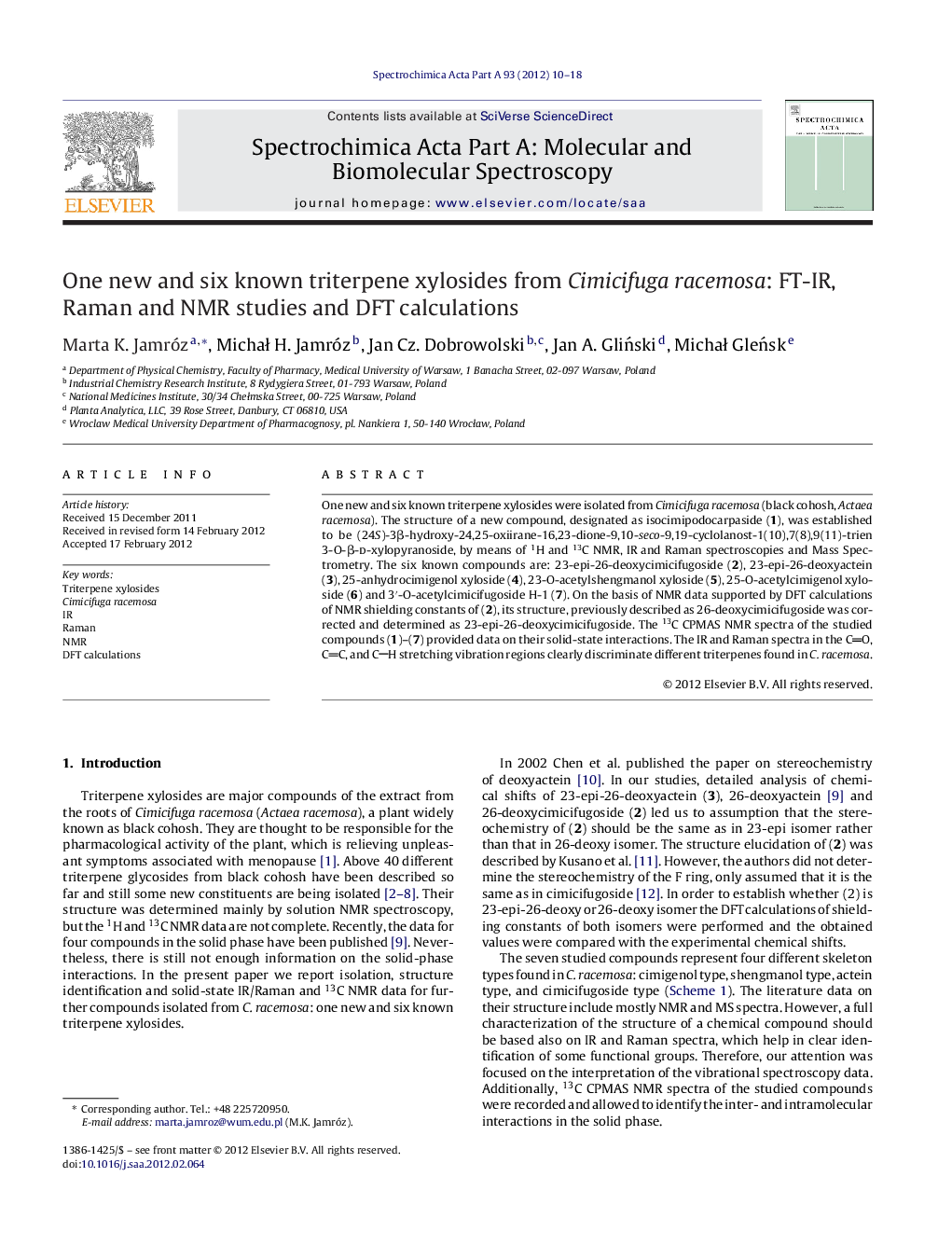| Article ID | Journal | Published Year | Pages | File Type |
|---|---|---|---|---|
| 1232750 | Spectrochimica Acta Part A: Molecular and Biomolecular Spectroscopy | 2012 | 9 Pages |
One new and six known triterpene xylosides were isolated from Cimicifuga racemosa (black cohosh, Actaea racemosa). The structure of a new compound, designated as isocimipodocarpaside (1), was established to be (24S)-3β-hydroxy-24,25-oxiirane-16,23-dione-9,10-seco-9,19-cyclolanost-1(10),7(8),9(11)-trien 3-O-β-d-xylopyranoside, by means of 1H and 13C NMR, IR and Raman spectroscopies and Mass Spectrometry. The six known compounds are: 23-epi-26-deoxycimicifugoside (2), 23-epi-26-deoxyactein (3), 25-anhydrocimigenol xyloside (4), 23-O-acetylshengmanol xyloside (5), 25-O-acetylcimigenol xyloside (6) and 3′-O-acetylcimicifugoside H-1 (7). On the basis of NMR data supported by DFT calculations of NMR shielding constants of (2), its structure, previously described as 26-deoxycimicifugoside was corrected and determined as 23-epi-26-deoxycimicifugoside. The 13C CPMAS NMR spectra of the studied compounds (1)–(7) provided data on their solid-state interactions. The IR and Raman spectra in the CO, CC, and CH stretching vibration regions clearly discriminate different triterpenes found in C. racemosa.
Graphical abstractFigure optionsDownload full-size imageDownload as PowerPoint slideHighlights► Structure of one new triterpene xyloside (isocimipodocarpaside). ► Determination of stereochemistry of 26-deoxycimicifugoside. ► Identification of characteristic vibration frequencies of the four types of triterpene skeletons. ► Comparison of liquid and solid 13C NMR chemical shifts in order to describe solid state interactions.
